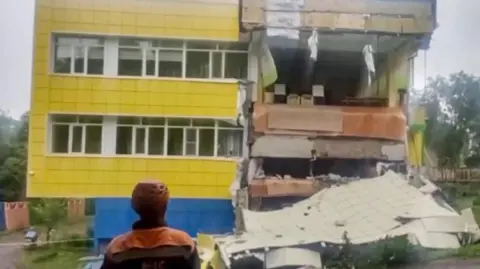On July 30, 2025, a powerful earthquake measuring 8.8 on the Richter scale struck near the Kamchatka Peninsula in Russia, prompting immediate tsunami warnings throughout the Pacific region. The seismic event occurred at 11:25 AM local time, leading to swift evacuation orders affecting over two million residents across various areas including parts of Russia, Japan, and the U.S. state of Hawaii. Although the earthquake was substantial, officials reported no severe damage or injuries, raising initial concerns about a disaster that ultimately did not materialize, as noted by a tourist in Hawaii.
As warnings circulated, people along the Hawaiian coast were ordered to evacuate to higher ground, with some experiencing waves as high as 1.2 meters on Oahu and 1.7 meters on Maui. Hawaii’s Governor, Josh Green, conveyed the gravity of the situation, stating, “It is not a regular wave. It will actually kill you if you get hit by a tsunami.” However, he later reported that no devastating waves had been observed, which led the Pacific Tsunami Warning Center to downgrade the tsunami warning to an advisory level. The Hawaii Emergency Management Agency guided evacuated residents to return home cautiously while remaining vigilant about potential flooding.
In California, the rugged coast recorded tsunami waves reaching 1.09 meters in Crescent City, while nearby San Francisco reported tidal surges of up to 0.7 meters. British Columbia in Canada issued a tsunami advisory for its coastal regions, although this was later rescinded with no significant incidents reported.
Back in Russia, where the quake originated, waves of up to five meters reached areas like Severo-Kurilsk, leading to localized evacuations without major injuries. Initial tsunami warnings for the Kamchatka region were also lifted after realizing that while some infrastructure experienced disruptions, the overall impact was less severe than feared. Kamchatka’s Governor, Vladimir Solodov, characterized the earthquake as a historic event for the region, made even more volatile by subsequent aftershocks, including one measuring 6.9.
In Japan, the earthquake’s tremors set off tsunami alert sirens, with waves surpassing one meter recorded along the Pacific coast, particularly affecting Iwate prefecture where nearly two million residents were advised to evacuate. Tsunami warnings were eventually adjusted down to advisory levels, and Japan’s Prime Minister, Shigeru Ishiba, confirmed that reports of significant damage were lacking. At the Fukushima nuclear facility, all 4,000 personnel were evacuated as a precaution, although operators reported no anomalies, contrasting sharply with the devastating events of March 2011 that had led to a catastrophic nuclear meltdown.
Across the Pacific, alerts were raised for regions in French Polynesia, Papua New Guinea, the Solomon Islands, and Vanuatu, with officials urging coastal populations to seek higher ground. Meanwhile, alerts in China’s Zhejiang province and Shanghai were lifted without incidents of damage, and countries like the Philippines, Taiwan, Chile, Costa Rica, and others also reported their alerts being rescinded.
The earthquake that triggered the tsunami warnings was a part of the highly active Pacific Ring of Fire, a seismically sensitive area where about 80 percent of the world’s earthquakes are recorded. Historical data shows that the Kamchatka Peninsula is at the heart of significant seismic activity, with the earthquake being one of the strongest ever recorded in the region.
In summary, while the monumental earthquake of July 30, 2025, raised substantial fears of widespread devastation and was capable of generating significant tsunami waves, emergency responses and evacuation protocols ensured minimal consequences throughout the impacted regions. This incident underscores the necessity for preparedness and timely response mechanisms in the face of potentially catastrophic natural events.











